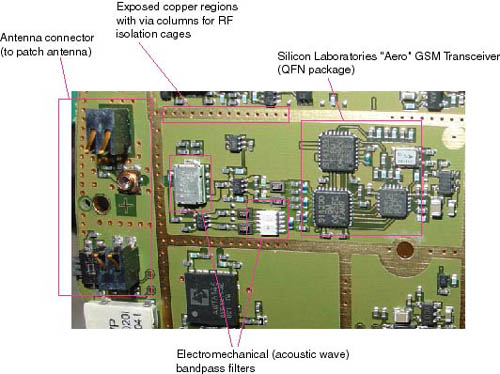I was really impressed at the quality of the responses to this past month’s Name that Ware contest. The analyses of the hardware were very in-depth, and several correct answers were given in the end. The device is in fact a Blackberry 7290 using the Cingular network, and again, Nate gave the correct answer first (using the SHA-1 sum hash to seal his answer): Nate even got the network provider of the phone correct (I’m surprised he didn’t also figure out the IMEI somehow). I think I should also note that Mike Miller also gave a correct answer. Congratulations! I’m hoping I can provide a bit more of a challenge next month.
The phone board you saw is in fact the guts of the phone that I use. As a sidenote, I’m pretty happy with the Blackberry; it does what it does well, and it doesn’t crash like the Treos do (hurray for not missing calls because my phone crashed). Normally, the RF perfromance of the phone is top-notch; I’ll get signals where others don’t. However, recently, my phone started acting up. My phone was having problems finding the network and it was dropping calls after about two minutes of talk time. It was getting pretty intolerable, so I decided to take a look inside to see what’s up. It seems that the antenna connectors on the phone had built up a little bit of oxide on their terminals. I think this happened because I tend to take my phone with me when I go out dancing or jogging. When I take the phone out of my pocket during such activities, the screen would be wet with condensation. Cleaning off the connectors and reseating the patch antenna seemed to do the trick, and the phone is back in fine working order again. Hurray for not having to drop another $300 on a new Blackberry!
Below is a picture of the relevant region of the Blackberry with some of the more interesting features called out. The antenna connectors are press-fit connectors with minimal wiping action. These types of connectors in my experience tend to be fairly unreliable; I used something similar to this once and I had about a 1 in 1,000 contact failure rate, which is pretty bad if you are trying to build a board with thousands of contacts (which I was doing). I also think it’s pretty neat to see how small they’ve gotten the acoustic wave filters that they use for the RF front end on these phones. For those who are not familiar with this technology, many phones use electro-mechanical filters to achieve the stringent spectral shaping requirements for cellular phones (yes, these filters really have parts that mechanically vibrate at frequencies of 1 GHz+!).
